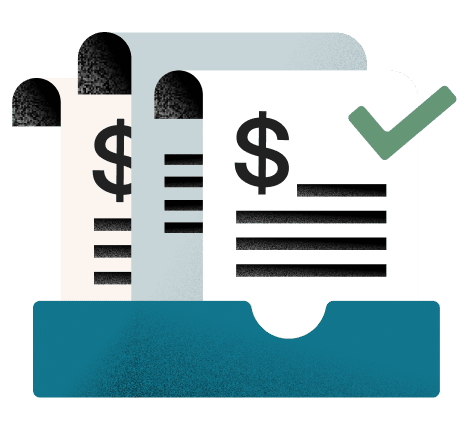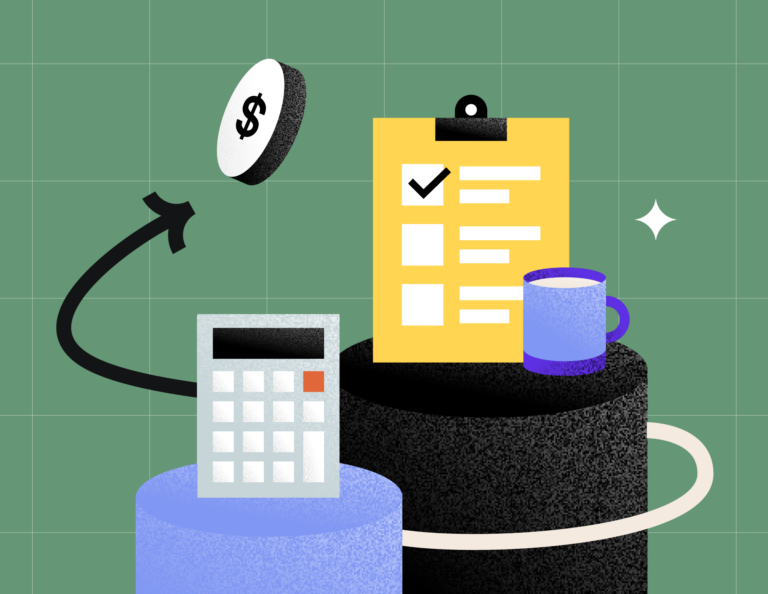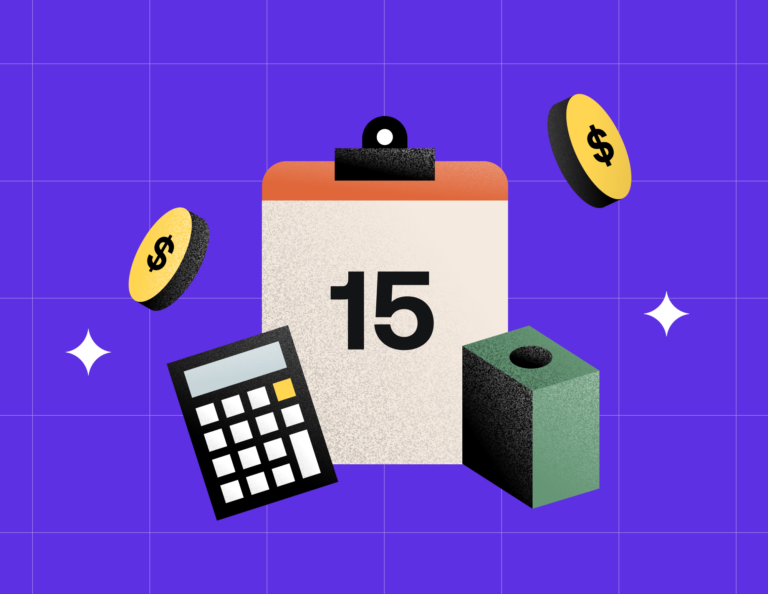Psychological pricing is important for independent business owners to understand, whether you’re just starting to price your services, or you’re looking to adjust them. Learn everything to know plus some of the top tips for setting your prices.

Do you feel like crawling back into bed every time you think about your pricing strategy? Whether you are just starting to build your business, or have been in business for a while, pricing your services can be a headache.
For many entrepreneurs, pricing comes with the baggage of imposter syndrome underlined by a lack of confidence, the fear of rejection, and failure. Invariably, this leads to pricing your services too high or too low.
Learning about the psychology of pricing can help you set your prices without second-guessing yourself. When you know more about your value, your ideal clients, and the prices that will appeal to them, you can find your genius pricing zone.
Find out how you can make your pricing more appealing to new and existing clients with these tips.
Jump to:

Create professional and branded invoices in minutes with HoneyBook.
Six principles of persuasion in psychological pricing strategy
Before you start to set your prices, it’s important to understand the six principles of persuasion that align with psychological pricing. Once you know these principles, you can make better decisions about how your services are priced and how you promote your pricing and packaging.
- Reciprocity: It is human nature to want to offer something back when you’re receiving something. Reciprocity when it comes to pricing means offering something valuable to current or potential customers, in exchange for them performing an action that helps your business. For instance, you can use freebies, coupons, and giveaways as a way to get current clients to promote your pricing.
- Commitment and consistency: When you consistently do what you promise in the way you promise, this builds trust. Clients will invariably return if they feel they can trust you.
- Social proof: This tells people that you are legit and trustworthy. Social proof includes positive comments about you, your company, or your services. Posting testimonials on your website is social proof, and high social proof and reciprocity are linked.
- Authority: Show customers and clients that you are an expert in your field. When you are knowledgeable and speak with authority about a topic or field, potential customers will be drawn to you.
- Likability: It’s a lot easier for us to say yes to the requests of people we know and like. Old-school Tupperware parties are a great example of how companies use the power of likability. For independent businesses, this might look like creating communities or offering exclusive membership opportunities.
- Scarcity: Who doesn’t want to feel special? By creating an atmosphere of scarcity, potential clients feel like they are one of the few people to have access to your product. Putting a time cap on a promotion, for example easily creates an atmosphere of scarcity.
Psychological pricing tactics for independent businesses
Now that you know the six principles of persuasion, you can start implementing psychological pricing in your marketing and sales strategies. Here are five methods that tap into your clients’ emotions as you set your prices.
Discount pricing
Discount pricing is a straightforward psychological pricing method. Essentially, you want to showcase a great discount in order to increase your number of customers or clients. This might mean pricing your services at a percent discount or offering another sale, like “buy one, get one free” for your digital products or add-on services.
Discount pricing is more of a short-term strategy, and I wouldn’t recommend using it year-round. The risk of using discounts long-term is that your clients could catch on and realize that you’re not offering a deal at all. Instead, use your discounts sparingly during times when you might want to increase clients (like during a slow season).
Charm pricing
Charm pricing is a psychological method that both product-based and service-based businesses can use to set their prices. Research shows that customers pay more attention to the initial digits in a price when reading left to right.
This is why you see so many prices on the market that ends in nines. When you price something $199.99 for example, customers associate it more closely with $100 versus $200, since they’re paying more attention to the one at the beginning.
Odd-even pricing
Odd-even pricing takes charm pricing to the next level, with the understanding that prices ending in even numbers are sometimes the best strategy. Since some prices ending in odd numbers seem like bargains, pricing at even numbers can help establish more value.
For many independent businesses like consultants, photographers, and graphic designers, even pricing can be the best option to show that you have straightforward, transparent pricing. Especially if you use longer prices, even numbers can highlight your value and improve trust.
Artificial time constraints
Artificial time constraints are helpful for creating a sense of urgency and a feeling of scarcity with your audience. This is a great marketing tactic for landing more clients, similar to discount pricing. If you’re unveiling a new service, you can start with a high price and implement a lower-priced special that’s only valid for 24 hours.
With this method, you have to have a great marketing plan in place to promote the limited-time offer. You also need to use this method as a short-term strategy. If you overuse it, people will catch on to the fact that there isn’t a time constraint in your offering after all. Make sure the offer and timeline are both communicated across your social profiles, website, email newsletters, and any other channels you use.
Scarcity pricing
People generally want what they can’t have. That’s why millions of people around the world wait in cold weather for the release of the iPhone or even sleep in front of the store to be the first ones to own a new pair of Jordans. Black Friday works so well because you know that you want to be able to get this deal again for at least another year. Not necessarily because it is such a great deal.
You can use scarcity pricing for your independent business by offering a waitlist for certain services or offering a limited number of digital products for your clients to download. Scarcity pricing is a great tactic for testing products and services since you can see how quickly your audience jump on certain deals.
Tips for setting a long-term pricing strategy
Now that you have these psychological pricing tactics in your toolkit, it’s time to focus on your long-term pricing strategy. Be sure to incorporate the methods above as you consider your seasonal income, marketing tactics, and more. But, leverage these tips below for year-round success as well.
Know your ideal client
One of the most difficult lessons I had to learn when setting prices is that a lower price often attracts the most demanding and difficult clients. Clients who jump on the best sales and deals may not understand the full value of your work, or may not be the best fit–they could just be booking with you because they feel they can’t pass up your offer.
While this means your psychological pricing works, it’s important to balance the quantity and quality of your clients. Always use a process to evaluate client fit, even if you have a high volume of clients coming in. The best way to do this without feeling overwhelmed is by using an automated process for qualifying leads.
Understand your value
Before you start setting or changing your prices, it’s important to know your strengths and acknowledge your achievements. When it comes to pricing, many independent business owners start listing everything they aren’t good at or haven’t achieved yet. Independents, in particular, tend to focus on errors in their work. I have photographers pointing out to me regularly what they missed at the last photo shoot, and because of that, they are not willing to raise their prices. Your clients don’t know what they don’t know, but they do know what kind of work they have seen from you and that they want it.
Instead of searching for your weaknesses, focus on your strengths. Research your market to take an objective look at how you compare. What do you do differently? How do your prices compare to others?
By understanding your value, you can use a more competitive pricing strategy and ensure you’re setting yourself up for success.
Track your expenses
Understanding your expenses is key to successful pricing. If you don’t know how much it costs to operate your business, how will you know how much you need to charge to make a profit? Tracking your expenses gives you a baseline to use for your pricing. From there, you can use a traditional cost-plus pricing model to add a percentage to your expenses and generate a profit with each client.
Set your revenue goals
Along with understanding your expenses, you need to set your revenue goals as well. This applies whether you’re looking at an entire year or establishing goals for a limited-time pricing strategy.
Do you want to make 15% more than last year? Do you think it’s feasible to double your revenue? Whatever you choose, use this goal to guide your pricing. You may find that you need to rely on seasonal deals throughout the year to hit your objectives, or that you need to raise your prices at milestones throughout the year.
Evaluate your pricing each year
Every year, the economy changes. Inflation goes up, and cost-of-living changes for everyone. With all this change, your business should adjust as well. Raising prices can feel stressful for any business, but once you make it the norm, it becomes easier.
Each year, think about raising your prices by at least 3–5% for inflation. On top of that, consider if you have some services that should increase more, or if you want to increase your entire pricing strategy overall. If you’ve added value for your clients, you already have a great reason for higher prices.
Try different pricing models
There are so many pricing models out there that are suitable for independent businesses. In addition to some of the psychological pricing methods we went through above, there are additional strategies you can use year-round.
Before you choose a certain strategy and run with it, consider if you can combine multiple models and test them. For instance, a new business might want to start with a penetration pricing strategy before shifting to a cost-plus pricing method. From there, they may also want to layer on scarcity pricing each winter as a marketing tactic to carry them through the down season.
Don’t be afraid to shift your pricing as you discover what works. You can always be transparent with your clients and let them know you’re offering new pricing for the time being. If you’re targeting the right clients, they’ll understand the value behind your prices.
Sell your services with a better system
Setting your prices is only half the battle. Afterward, you need to successfully showcase your prices and get your clients to book with you. The best way to sell your services is with an all-in-one clientflow management platform like HoneyBook.
From initial inquiry to selling and booking, HoneyBook lets you manage everything in one place. Show off your new prices with interactive sales guides that let you incorporate social proof and branding while also letting your clients choose services, sign an online contract, and pay in one file.

Use HoneyBook to simplify your payment process—no more chasing payments.



